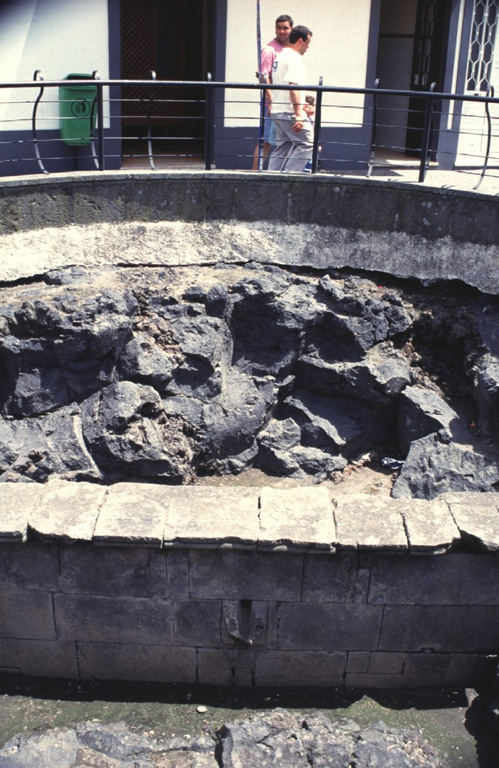Global Volcanism Program | Image GVP-06230

A public fountain at Ribeira Grande on the northern coast of San Miguel Island was buried by a lava flow that was erupted from Agua de Pau volcano in 1563. The lava flow originated during the Pico do Sapateiro eruption, which began on 2 July when vents formed across the Queimado dome on the NW flank, generating an eruption column with blocks and bombs. The flank eruption was preceded by a major Plinian eruption from the central caldera that began on 28 June and deposited trachytic pumice dominantly eastward over the island; the summit eruption ended a day after the flank activity began.
Photo by Rick Wunderman, 1997 (Smithsonian Institution).
![]() This image is made available under the Public Domain Dedication CC0 license, but proper attribution is appreciated.
This image is made available under the Public Domain Dedication CC0 license, but proper attribution is appreciated.
Keywords: lava flow | human impacts | inundation

Agua de Pau
